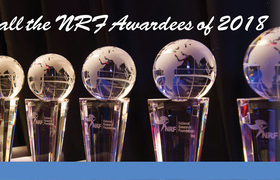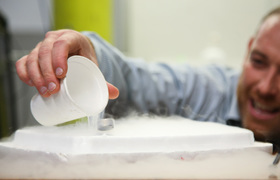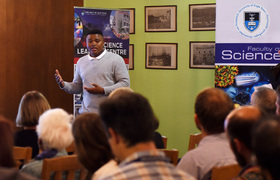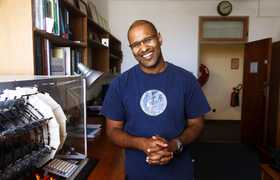Training African researchers for the ‘beamline’
06 December 2018 | Story Nadia Krige. Photo Michael Hammond. Read time 7 min.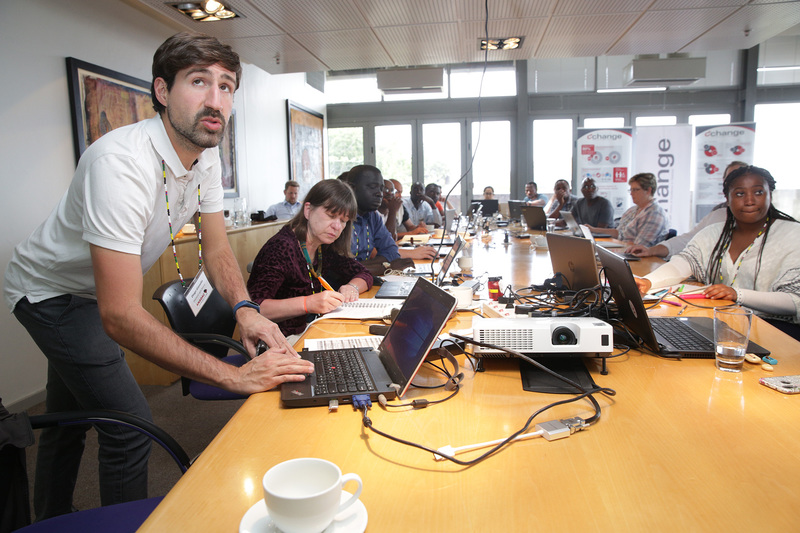
For the past week and a half, the University of Cape Town (UCT) has played host to an exciting workshop aimed at training emerging African faculty researchers in the art of analysing data collected at international synchrotron and/or neutron facilities.
Known as the African Neutron and Synchrotron Data Analysis Competency (ANSDAC) project, this is a completely new training opportunity for the continent. It is aimed at helping equip local researchers with the expertise needed to earn “beamtime” at these large-scale international facilities.
What makes “beamtime” so sought-after among researchers in this field is the fact that synchrotron facilities produce light at a very high intensity. Using physical properties, researchers can bend these to create X-rays of high intensity for purposes of probing different materials.
Results of this kind would be impossible to achieve in a laboratory.
A project of this magnitude requires a good deal of collaboration and input from various partners. The ANSDAC project is no exception and comes as a result of close cooperation between the Royal Academy of Engineering in the United Kingdom (UK) and the Department of Science and Technology and National Research Foundation (DST-NRF) Centre of Excellence in Catalysis (c*change), hosted in the Department of Chemical Engineering at UCT.
It has been financed by the Newton Fund, with in-kind contributions by the University of Glasgow, the University of the Western Cape and Sasol.
The workshops are presented free of charge and include accommodation and catering for all researchers. Numbers are limited to 15 participants per workshop for the most recent one, and for the one which is set for next year.
Nico Fischer, who is heading up the project from c*change’s side, said it was decided to cover all costs related to the workshops so as not to exclude any potential participants – especially from universities that may be low on funding and facilities.
“I initially had a bad feeling about it, because if you offer things for free sometimes people don’t appreciate them and may even cancel at the last minute… but everybody came,” he said.
“If anything, this commitment shows the need for something like this.”
Breaking the vicious cycle of African exclusion
To put the need for the ANSDAC project into perspective, Fischer explained that Africa is one of only two continents that does not have its own synchrotron facility. The other is Antarctica.
Thus, African researchers who require beamtime to take their experiments to the next level need to apply to international facilities, which are notoriously strict in their selection processes.
“It’s a vicious cycle. If you don’t have the experience you don’t get the output, if you don’t get the output you don’t get any beamtime.”
To apply, the researcher needs to demonstrate that they understand the concept, that the experiment they’re planning is actually doable and makes sense, and that – since these facilities are essentially funded through taxes – that the tax payer’s money is being well spent.
The best way for researchers to prove this is through publications demonstrating their understanding of the subject field and technique.
“It’s a vicious cycle,” said Fischer. “If you don’t have the experience you don’t get the output; if you don’t get the output you don’t get any beamtime; if you don’t have beamtime, you never get experience. It’s very difficult to make the step into that game.”
Should a researcher be fortunate enough to get beamtime, the next hurdle to overcome is dealing with the massive amount of data their experiment will most likely generate.
“The data analysis – we believe – is the biggest hurdle for people to get the entrance into the game,” said Fischer.
For this reason, the ANSDAC project has brought in experts from Diamond Light Source and ISIS Neutron and Muon Source – both in the UK – to present workshops focusing on data analysis.
Participant profile
Because of the limit on workshop participant numbers, Fischer and his team have also had to be strict in their own selection process.
In their applications, potential participants had to show that they had some basic knowledge and that the techniques being presented were relevant to their research field.
“We wanted people who had the wish to use these techniques already, but didn’t have the skills to do so,” Fischer explained.
Another important requirement was that the participants had to show that they were committed to going back to their institutions and training their colleagues and students upon completion of the workshop.
“We got around 55 CVs – after deadline close, I got another five emails asking if they could still apply and I had to turn them down,” Fischer said.
“We wanted people who had the wish to use these techniques already, but didn’t have the skills to do so.”
As soon as dates have been finalised for the 2019 workshops, the application portal on the ANSDAC website will be opened for the next set of potential participants.
“This week’s lectures started with an easy introduction,” said Esna du Plessis, a representative from Sasol who helped Fischer organise the project.
“Lecturers presenting the workshops have a lot of experience in sharing their knowledge, so can easily adjust to the needs of the participants.”
She added that the highlight was expected to be a practical lecture focused on writing proposals for beamtime. Once the researchers have completed their proposals to a satisfactory standard, these will be submitted to Diamond Light Source and ISIS Neutron and Muon Source for consideration.
Opportunity to experience beamtime first-hand
The ANSDAC project will culminate in a trip to the UK in 2019, where a group of about 10 participants from both workshops will pay a visit to these facilities to experience beamtime first-hand.
“It’s going to be more about the experience than getting any real beamtime,” explained Fischer.
“This will also allow them to know what to expect when they get real beamtime for themselves.”
Once the second workshop has been completed, a call for applications to join the trip will be sent out to all participants.
Selection will depend on the type of samples researchers have available, as well as their motivation for wanting to go.
 This work is licensed under a Creative Commons Attribution-NoDerivatives 4.0 International License.
This work is licensed under a Creative Commons Attribution-NoDerivatives 4.0 International License.
Please view the republishing articles page for more information.







